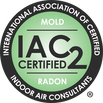Mike's Home Inspector BlogMichael Burfitt |
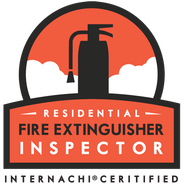 We are fortunate in Nova Scotia to have countless dedicated fire departments to protect our lives and property. While I am comfortable with the level of coverage we have in Halifax and sleep easier knowing we have a highly skilled group of professionals ready to deploy, the simple fact is that when it comes to house fires, often the fire department cannot arrive in time to save a home and contrary to popular belief, newer homes generally burn much faster due to the large number of synthetic materials used in new construction and furniture, such as oriented strand board (OSB). There are five basic types of fires. They are: Class A – Wood, Paper, Cloth Class B – Gasoline, Paint, Oil, Grease Class C – Live Electrical Equipment Class D – Combustible Metals Class K – Commercial Cooking Oil Class D and K are not generally something to worry about in most homes so that leaves A, B & C. Fortunately, extinguishers rated for all three types of fires are easy to find so there is no need to carry three different types of extinguishers. As someone who has assisted in teaching proper fire extinguisher operation and a professional home inspector, I am concerned about the general lack of fire protection in the homes I inspect, with usually no more than one extinguisher that is so old it should be replaced. Personally, I have a total of 4 ABC extinguishers at home and are located:
The single biggest takeaway from this article is to save the heroics for the movies. It only takes minutes for a fire to become fatal and if you are not able to extinguish it within seconds, it is time to flee and call for emergency help (911 works anywhere in Nova Scotia). It is important to learn the proper PASS (Pull pin, aim at the BASE of the flame, and sweep side to side) technique for fighting a fire, never turn your back to a fire, make sure you have a clear and immediate escape path and, as I learned firsthand, fires can very quickly re-ignite if not completely extinguished. Have a fire plan in place, call the fire department even if the fire is put out and no matter how silly it feels practice an escape plan regularly with your family. It has been a challenging year to say the least and I do not want to read any tragic stories about a family who lost their homes or their lives due to a lack of a fire safety plan. If you do not have at least one fire extinguisher in your home, head to your nearest store today and pick one up. As any homeowner can tell you, running a house can be an expensive endeavor. The costs of many repairs can run into the thousands, and it can be incredible how much damage even a small water leak can do. In my career I run across many issues that can be repaired for very little cost, usually as a weekend DIY project. These are probably the three most common issues I see:
Negative Grading/Clogged or Missing Gutters As home inspectors, we often joke that moisture is our sworn enemy. While water is obviously essential for life and for a safe and healthy home, it needs to be contained properly. The biggest issue I see in homes is poor exterior drainage: most particularly when looking up to the rain gutters. For example, I recently inspected a property that only had gutters on one side, and they were almost completely clogged with debris. Most residential roofs are designed to rapidly force water off the surface and this extra force had compacted the soil and created a negative slope towards rather than away from the foundation. Water has a way of finding the tiniest cracks to find its way inside and particularly in a finished basement can cause significant damage before being detected. Be sure to keep those gutters clear (or install them if they are missing) and check the ground near your home to make sure it is sloped away from the foundation. Clogged Air Filters Most HVAC (Heating, Ventilation & Air Conditioning) units such as HRVs (Heat Recovery Ventilators), Furnaces and Heat Pumps have air filters and, in my experience, are rarely if ever cleaned. The main implication can go from poor air quality and increased energy consumption up to premature system failure. Just like a vehicle, each manufacturer has a recommended schedule for replacing or cleaning filters and this should be followed as closely as possible to maximize efficiency and safety. On a side note, a future project I would love to be a part of is creating (or improving) an app that allows easy and efficient maintenance planning and scheduling like what is used in the commercial building services industry. In the meantime, please check your filters and replace as necessary! Dryer Vent Issues I have yet to come across a home that had perfect dryer ventilation. There are several issues I regularly see when it comes to dryers.
According to my research, Halifax averages about one reported dryer fire a month and that is one too many as they can be easily prevented with regularly cleaning. A clogged dryer can also lead to greatly decreased efficiency, moist air expelled into the home (remember, moisture is the home inspector's sworn enemy) and is usually an easy fix for homeowners. These three items should be checked regularly (usually every season) and with summer just starting why not do them this weekend? The best way to repair an expensive issue is to stop it before it happens. Your house and your home inspector will thank you! As both a professional home inspector and a father to a young child, my biggest concern is home safety: particularly of hidden dangers in a home that might not be immediately apparent. One such danger is Knob and Tube (K&T) wiring, which was commonly used from approximately 1880 up until the 1940s. Here is a picture of what K&T wiring commonly looks like: As you can see, once you know what to look for it becomes obvious, however it is often buried behind walls, in attics, in crawlspaces and other areas that are difficult to access. Contrary to popular belief, K&T is not inherently unsafe by itself, and it is not illegal to use in a residential property, although new installations of K&T in homes most certainly are! Furthermore, there are some advantages, such as better heat dissipation and a near guarantee it was installed by someone highly skilled as it was very difficult to install K&T properly.
With that said, I will always recommend an electrician evaluate a K&T system and if I were buying a home with K&T I would make immediate plans for its removal without exception. What is wrong with K&T and why do I personally consider it necessary to remove? Knob & Tube is Old and Outdated Given that K&T has not been widely installed in North America for almost 90 years, it is guaranteed that any K&T wiring installation is well past the expected lifespan of about 50-60 years due to deterioration of the cloth sheathing that was used. These systems are also underpowered for modern electrical needs and have almost certainly been modified with various degrees of skilled DIY’s, contractors, or electricians. There is also the concern of added insulation not allowing heat to escape from these wires, which can be a significant fire hazard. These Systems are Not Grounded All modern electrical systems are required to have a grounding wire (this is the bottom part of the plug), and this has been a requirement since about 1960. Therefore, since almost all K&T predates this timeframe, it can be safely assumed that a K&T system is not grounded. I plan on doing plenty of articles about residential electrical in the future but in the meantime just understand a ground is a safety feature designed to protect against electrical shock and all homes should be insured against ground faults. Speaking of insurance: Knob & Tube Has Potential Insurance Implications I would someday love to create a neat little table of all insurance providers in Nova Scotia and what their policy is on insuring houses with K&T. While I unfortunately do not have that information, I can safely assume that almost all insurers will either refuse to offer coverage to a home with K&T or require a significantly higher premium and/or deductible. It should also be mentioned that finding K&T in an attic or crawlspace is not by itself a cause for panic: due to the difficulty in removing K&T it is often just abandoned and left in place. This is not a concern if it is properly decommissioned. A home inspector or electrician can determine if your home has active K&T and can offer recommendations of the next steps to ensuring you have a safe electrical system. The home inspector has many tools at their disposal to assist in providing the best possible inspection to our clients and none is more interesting (or fun) to use than the thermal camera. Simply put, it uses Infrared (IR) technology to superimpose a “heat signature” into a standard camera image. Here is a clear example of how it works: this is a picture of a portable air conditioning unit: it is obvious from this image it is a hot day! As a relatively new technology to our industry, there are a lot of benefits to using IR imaging, but it does have its limits: IR Does Not Grant Superman Powers
While it certainly looks like X-ray vision, a thermal camera does not allow an inspector to see through walls. It can, however, identify cold spots, indicating poor insulation or potential moisture problems that warrant further investigation. IR Works Based on Temperature Difference While extreme temperatures are not pleasant (such as the hot day this blog post was written!) for an inspector they are a bonus on inspection day. Particularly in cold weather, it is easier to see the temperature difference between the outside and inside and therefore easier to determine if there are cold patches indicating poor insulation or an air leakage. IR is Not as Simple as it Looks! In what seems to be a common theme to my writing, using a thermal camera looks simple but it more complicated than it appears. For example, the inspector needs to be aware that every surface has an emissivity rating (the ability of a surface to reflect infrared radiation), the angle of the image changes the apparent temperature, some materials (such as metals) give false readings and it is more important to look for qualitative data (temperature differences) than quantitative data (actual temperatures) when doing a thermal scan. I am starting to sound like this technology has a lot of drawbacks but in reality, it is a fantastic piece of technology that usually provides valuable information for the inspector. Here are just some of the many useful ways I have used my IR camera both on the job and around the house:
The gallery below shows some visual examples of how useful IR technology can be for inspectors and homeowners alike. Like most of our tools, when used properly they can provide valuable diagnostic information invisible to the naked eye. |
Archives
July 2024
Categories
All
|
|
Inside Edge Home Inspections Ltd.
Halifax, NS 902-209-9921 [email protected] Proudly Serving the HRM & Central Nova Scotia |
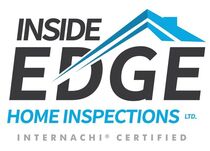
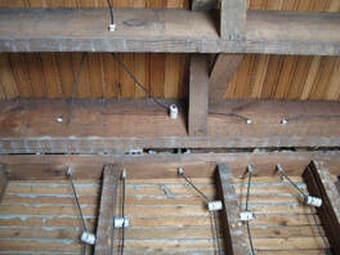
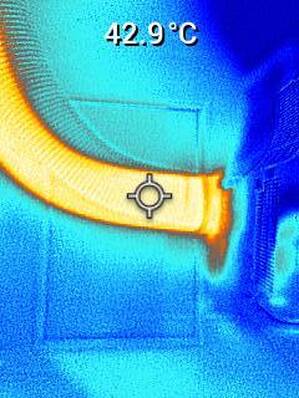
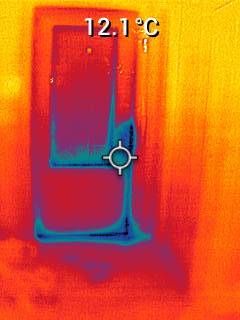
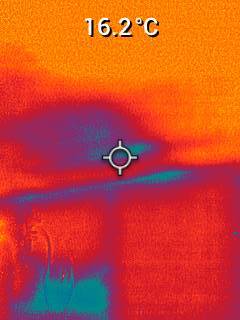
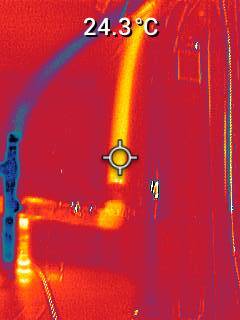
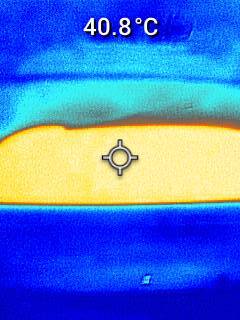
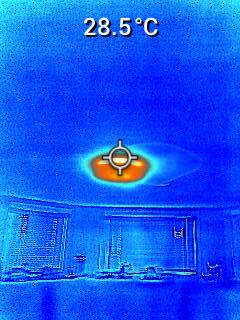
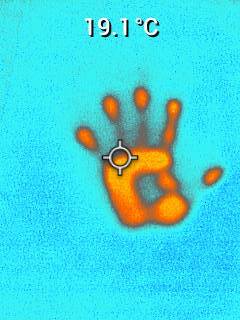
 RSS Feed
RSS Feed

